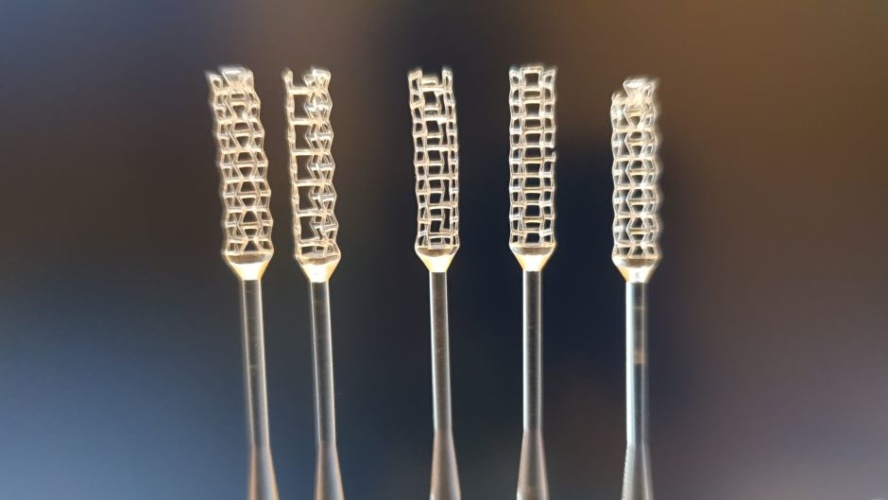
The team comprising Dr Arun Arjunan, John Robinson, Dr Ahmad Baroutaji and Suhaib Zahid from the School of Engineering has, for the first time, developed a one size fits all nasopharyngeal (the upper part of the throat behind the nose) swab using the concepts of mechanical meta-materials. This allows the 3D printed smart swab to navigate through the nasal cavity with less stress on the surrounding tissues.
More COVID-19 technology news from The Engineer
Dr Arjunan told The Engineer that the first proof-of-concept prototype was developed using the surgical guide biomedical resin (FLSGAM01), which comply with ISO regulations 13485:2016 and 14971:2012 (later replaced by 14971:2019).
“The material is non-irritant, non-sensitiser, and non-cytotoxic,” he said via email. “This material is also suitable to be chemically disinfected using 70 per cent isopropyl alcohol.”
The choice of printer was informed by biocompatibility, accessibility, and affordability as it was agreed that the 3D printing technique and the material should make a critical impact globally.
“Consequently, the decision was taken to use the globally used stereolithography [SLA] technique in a ready-to-print biocompatible material that can be used in a low-cost plug and play desktop printer Form2,” said Arjunan. “As the project matures, we will publish a DoE [Design of Experiments] algorithm that allows users to factor in the variation in printing for almost all SLA printers available in the market and print a suitable swab.”
The auxetic swabs, which do not require any finishing, can shrink under axial resistance. Arjunan said 3D printing is the most versatile technique for developing auxetic meta-materials, but limitations are presented due to the requirement of the support structure.
“While these supports can be easily removed for macro-scale parts, it is not so when working at a sub-millimetre scale such as the one used in the swab,” he said. “This meant that certain geometries, although efficient at reducing lateral strain, have to be discounted due to their requirement for support structures. This makes developing optimisation algorithms all the more complex and limits the variability in auxetic structures that can be manufactured.”
Many countries are now facing shortages of nasopharyngeal swabs, which will become more critical in the coming months due to increased testing and global concerns over a second COVID-19 wave.
Next steps for the team at Wolverhampton University include post-optimisation for mass production and a multi-scale clinical validation of safety and comfort before the swabs can receive approval.
“The project is currently at TRL 2 and we are looking to apply for funding to progress the project to the next stages,” Arjunan said.





Hard hat mounted air curtain adds layer of protection
Something similar was used by miners decades ago!